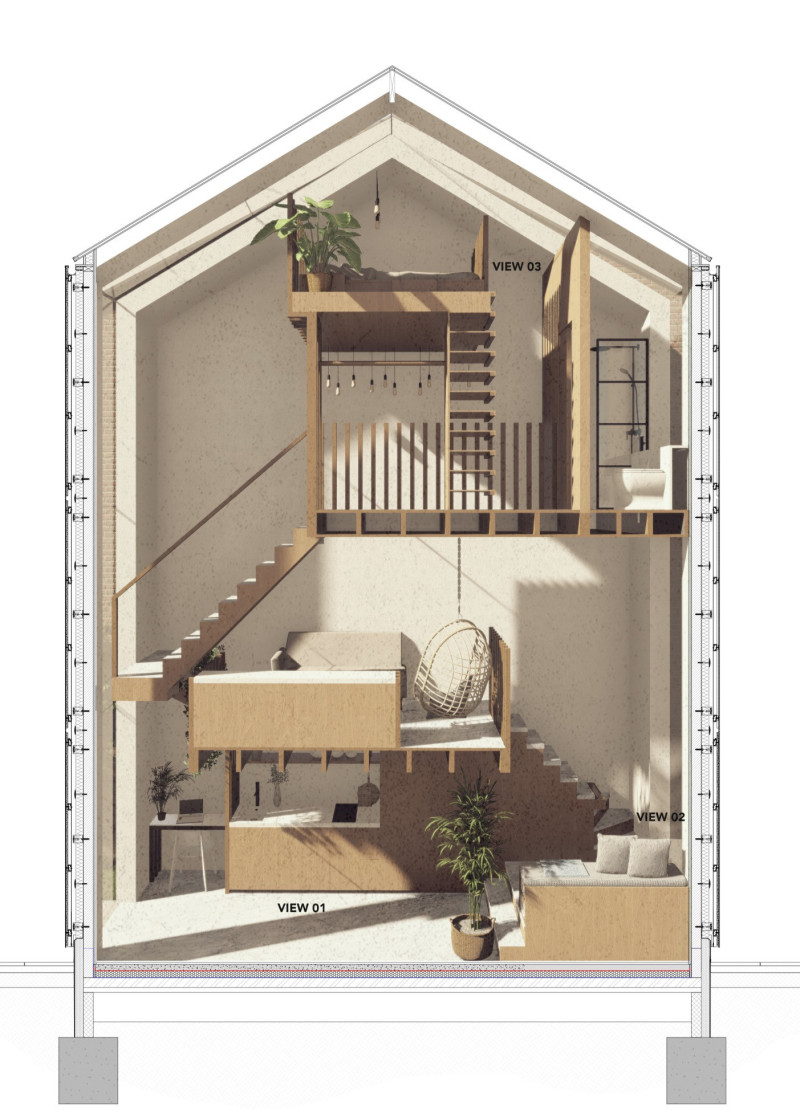5 key facts about this project
Microhome City offers a modern solution to the challenge of affordable housing in St Albans, Hertfordshire. Located in a city known for high property prices, the design targets young professionals and couples who are seeking manageable living spaces. The project utilizes a modular approach that adapts well to varying site conditions, making it easy to integrate new homes into the established urban environment.
Architectural Concept
The design focuses on placing modular housing units in underused side passages and vacant spaces between existing terraced houses. By exploring these overlooked areas, the project creates numerous opportunities for residential units without altering the overall look of the neighborhood. This approach maximizes the efficient use of space while maintaining a balance between communal areas and residents' privacy.
Sustainability Features
Sustainability is an important part of the design. The project emphasizes a small footprint and effective environmental performance. One key feature is the careful positioning of buildings to take advantage of passive solar energy. By designing facades that capture ample natural light, the living areas become warm and welcoming while reducing the need for artificial lighting and heating. This careful planning contributes to a smaller environmental impact.
Community Integration
Integrating the new homes with existing street layouts is essential to fostering community. The project upholds familiar urban structures, allowing a smooth flow from old to new homes. This design helps maintain neighborhood connections, encouraging residents to engage with their surroundings. The goal is to create an environment where social interactions can thrive, enhancing the overall community spirit.
Design Details
While specific materials are not mentioned, the design suggests a focus on modern construction methods that prioritize durability and energy efficiency. The finishing touches of the concept feature well-designed facades, carefully crafted to elevate the living experience while ensuring functionality. Microhome City exemplifies how thoughtful design can address pressing housing needs while respecting the characteristics of the urban landscape.





















































